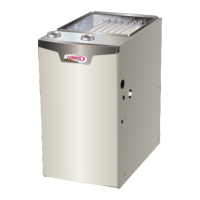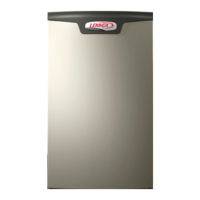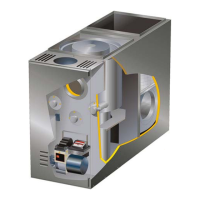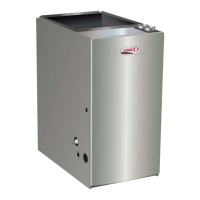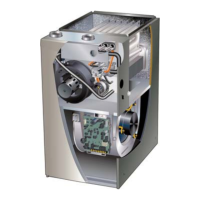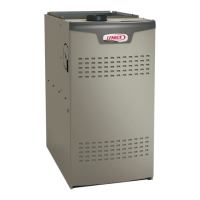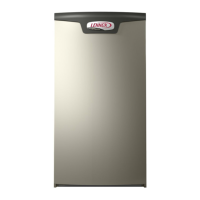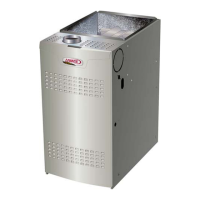Page 56
6 - If the heating demand continues beyond the third-
stage on delay, the integrated control energizes the
inducer at high speed. The indoor blower motor is
adjusted to a speed which is appropriate for the
target rate.
7 - When the thermostat heating demand is satised,
the gas valve is de-energized and the combustion
air inducer begins a 20-second post-purge. The
eld-selected indoor blower o delay begins.
8 - When the combustion air post-purge period is
complete, the inducer is de-energized. The indoor
blower is de-energized at the end of the o delay.
Service
WARNING
ELECTRICAL SHOCK, FIRE,
OR EXPLOSION HAZARD.
Failure to follow safety warnings exactly could result in
dangerous operation, serious injury, death or property
damage.
Improper servicing could result in dangerous operation,
serious injury, death, or property damage.
Before servicing, disconnect all electrical power to
furnace.
When servicing controls, label all wires prior to
disconnecting.
Take care to reconnect wires correctly.
Verify proper operation after servicing.
WARNING
The blower access panel must be securely in place when
the blower and burners are operating. Gas fumes, which
could contain carbon monoxide, can be drawn into living
space resulting in personal injury or death.
Annual Furnace Maintenance
At the beginning of each heating season, and to comply
with the Lennox Limited Warranty, your system should be
checked as follows:
1 - Check wiring for loose connections, voltage at
indoor unit and amperage of indoor motor.
2 - Check the condition of the belt and shaft bearings
if applicable.
3 - Inspect all gas pipe and connections for leaks.
4 - Check the cleanliness of lters and change if
necessary (monthly).
5 - Check the condition and cleanliness of burners and
heat exchanger and clean if necessary.
6 - Check the cleanliness of blower assembly and
clean the housing, blower wheel and blower motor
if necessary.
7 - Inspect the condensate drain and trap for leaks and
cracks. The drain and trap must also be cleaned
and the trap must be primed with water. Inspect the
rubber hoses connected to the pressure switches for
cracks or loose connections, replace as necessary.
Remove the rubber hoses from the cold end header
box and inspect for any blockage, clean as needed.
If strainers are installed in the hoses remember to
remove and clean before reinstalling the hoses.
8 - Evaluate the heat exchanger integrity by inspecting
the heat exchanger per the AHRI heat exchanger
inspection procedure. This procedure can be
viewed at www.ahrinet.org
9 - Ensure sucient combustion air is available to the
furnace. Fresh air grilles and louvers (on the unit
and in the room where the furnace is installed)
must be properly sized, open and unobstructed to
provide combustion air.
10 - On condensing furnaces, inspect the furnace intake
and exhaust pipes to make sure they are in place,
structurally sound, without holes, blockage or
leakage and the exhaust pipe is sloped toward the
furnace. Inspect terminations to ensure they are free
of obstructions and are structurally sound. Inspect
the furnace return air duct connection to ensure the
duct is sealed to the furnace. Check for air leaks on
supply and return ducts and seal where necessary.
11 - Inspect the furnace return air duct connection to
ensure the duct is sealed to the furnace. Check for
air leaks on supply and return ducts and seal where
necessary.
12 - Check the condition of the furnace cabinet insulation
and repair if necessary.
13 - Perform a complete combustion analysis during the
furnace inspection to ensure proper combustion
and operation. Consult Service Literature for proper
combustion values.
14 - Verify operation of CO detectors and replace
batteries as required.
Perform a general system test. Turn on the furnace to
check operating functions such as the start-up and shut-
o operation.
1 - Check the operation of the ignition system, inspect
and clean ame sensor. Check microamps before
and after. Check controls and safety devices (gas
valve, ame sensor, temperature limits). Consult
Service Manual for proper operating range. Thermal
Limits should be checked by restricting airow and
not disconnecting the indoor blower. For additional
details, please see Service and Application Note
H049.

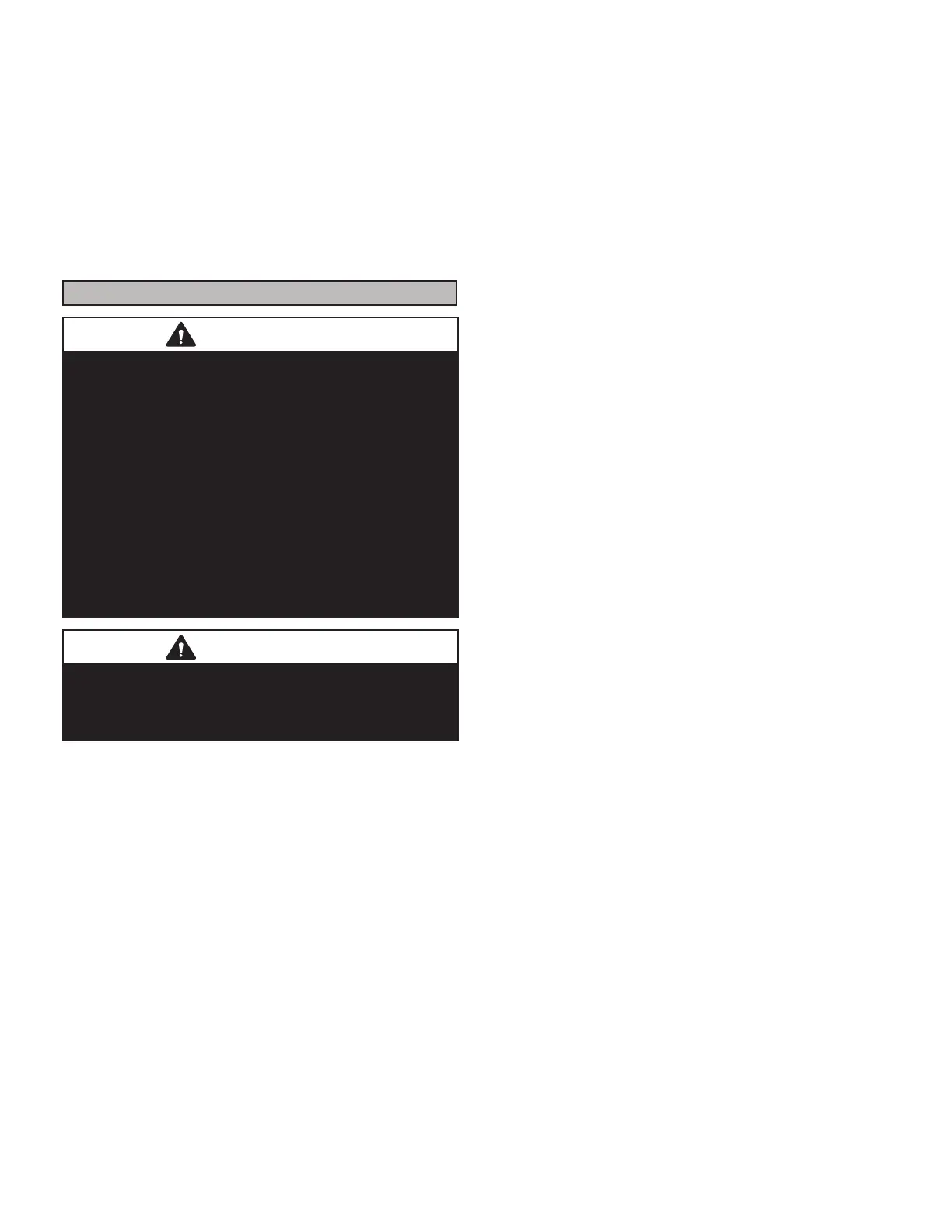